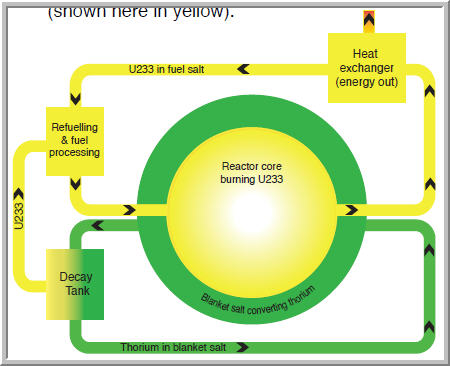By Walter Sorochan Emeritus Professor San Diego State University
Posted June 30, 2015, Disclaimer The information displayed herein is intended to simplify the complexity of using thorium in place of uranium as energy in nuclear power plants.
The nuclear power plant disasters at Three Mile Island, Chernobyl and Fukushima have made all of us aware of the dangers inherent in using uranium to generate electricity. Overlooked in the heat of these catastrophes has been thorium, a safer alternative to uranium. The mass media has given no attention to thorium. But this may be changing as countries the world over are attempting to harness thorium as a safer substitute energy for uranium.
Purpose of article: Switching from uranium to thorium as our primarily energy fuel could lead to cheaper, safer and more sustainable nuclear power. If you haven't heard of thorium or this idea, you are not alone! This article looks into this well kept secret. Info all documented for quick reading.
There are skeptics who reject the argument that thorium may be safer than uranium. We do need more research on using thorium instead of uranium as an energy source in nuclear power plants and much of this research is now being done in Asia.
Nuclear energy may be complicated but we need to understand how it works before attempting to understand why thorium is a better source of energy than uranium.
What is nuclear power?
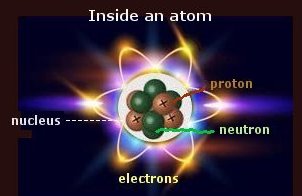 The word "nuclear" refers to the nucleus, or dense center of the atom. The illustration on the right [ not drawn to scale ] shows inside an atom that has a nucleus [ white ]in the middle, neutrons [ green ], protons [ brown ] and is surrounded by electrons[ yellow ].
The word "nuclear" refers to the nucleus, or dense center of the atom. The illustration on the right [ not drawn to scale ] shows inside an atom that has a nucleus [ white ]in the middle, neutrons [ green ], protons [ brown ] and is surrounded by electrons[ yellow ].
In a nuclear power reactor, these nuclei are split into smaller parts through a process known as fission. A sub-atomic particle known as a neutron strikes the nucleus of an atom of suitable fuel (particular isotopes of the heavy elements uranium and plutonium) breaking it into its component parts. Each fission results in the release of energy in the form of electromagnetic radiation and kinetic energy in the fragments of the split nucleus. This effect is twofold; the release of energy will produce heat, and the release of neutrons, which can in turn fission other atoms.
In material that has typically been employed as nuclear fuel, this reaction occurs in a "chain reaction" and is self-sustaining. When this is occurring, the reactor can be said to be"'critical". In a fission weapon, a mass of plutonium or uranium in excess of critical is assembled very quickly, with a flood of neutrons from a device known as an "initiator". The release of energy is extremely rapid and results in a massive explosion.
In a nuclear power reactor, the reaction is far slower and more controlled - the heat produced can be harnessed to boil water to spin turbines for the generation of electricity and this has been in practice for decades. The use of nuclear reactors for power generation began on 27 June 1954 at the Obninsk power plant in the former Soviet Union and has continued in numerous countries to this day.
There are of course, some significant problems with nuclear power. Fission reactions will always result in the production of radioactive waste products which require secure storage and pose a health risk to humans and the environment. There is the possibility that the operators may lose control of the fission chain reaction resulting in an accidental release of this material (often referred to as a "meltdown"). There's also the concern that reactors may also be used for the production of material suitable for nuclear weapons.
The key difference between thorium and other nuclear fuels is that thorium cannot sustain a chain reaction on its own. Fissile fuels like uranium and plutonium are able to sustain a chain-reaction, yet fission can also be achieved in material like thorium that is not fissile but fertile - i.e. it can produce fissile material, if neutrons are provided from an outside source. Thorium chain reaction can be easily controlled whereas uranium is difficult.
How nuclear energy works.
|
Transmutation Rocks and minerals do not stay the same forever. It may seem so but rock formations change with time! This change is referred to as Transmutation. "Transmutation is a form of fission that occurs in nature in a slow manner when nature slowly decomposes and changes a rock or element into a new form. Rock change happens in nature, and uranium can be found in many forms. In every sample of uranium ore, one finds radium -- but radium is, in a certain sense, just a transformation of uranium. Speaking loosely, one could say that it is a disguised form of uranium. It is just one of the many elements in the chain of decay. Similarly with polonium. Similarly with radon gas. These are all just different manifestations of uranium, so to speak, resulting from radioactive decay." Bowersox Alchemy And similarly with the fallout from atomic bombs and nuclear power plants; all those radioactive materials which are released by nuclear explosions -- such as iodine-131, strontium-90, cesium-137, krypton-85, and all the rest -- they are all broken bits of uranium atoms. They are additional disguises for uranium, resulting from nuclear fission. Scientists can also use a machine, like nuclear reactor, to bombard a nucleus, causing it to transform or change, as in split of a neutron [ or fission ] and thereby create a new form of nucleotide. Scientists can force a stable nucleus to become excited or unstable so that it can lose or gain energy. It’s done by nuclear reaction. This is fission – which is the process whereby the nucleus splits and releases tremendous amounts of energy. Artificial nuclear transmutation may take place in machines like particle accelerator, tokamak or stellarator. They can generate enough energy to make transmutation. Hence nuclear fission. The diagram below is a simplified version of uranium fission.
With each step of the reaction [ above ], the splitting of uranium [ or thorium ] creates new substances and a release of a lot of "Super Hot thermonuclear" energy. U235 splits in half, creating new forms of toxic radiation substances Cs140, Rb92, Uranium-238, many new fast neutrons and lots of energy. The fast neutrons can start another chain reaction by continuing to bombard uranium 238, splitting it and releasing plutonium-239 and still more hot energy. This chain reaction can continue indefinitely unless it is stopped. NOTE: Thorium reactor does not produce plutonium. Longterm radioactive waste is < 1% of that of a classic reactor. |
|
The Uranium Reactor Katusa: thorium not uranium 2012 "The typical nuclear-fuel cycle starts with refined uranium ore, which is mostly U238 but contains 3% to 5% U235. Most naturally occurring uranium is U238, but this common isotope does not undergo fission – which is the process whereby the nucleus splits and releases tremendous amounts of energy. By contrast, the less-prevalent U235 is fissile. As such, to make reactor fuel we have to expend considerable energy enriching yellowcake, to boost its proportion of U235. Once in the reactor, U235 starts splitting and releasing high-energy neutrons. The U238 does not just sit idly by, however; it transmutes into other fissile elements. When an atom of U238 absorbs a neutron, it transmutes into short-lived U239, which rapidly decays into neptunium-239 and then into plutonium-239, a weaponizable byproduct. When the U235 content burns down to 0.3%, the fuel is spent, but it contains some very radioactive isotopes of americium, technetium, and iodine, as well as plutonium. This waste fuel is highly radioactive and has half-lives of many thousands of years. As such, the waste has to be housed for up to 10,000 years, cloistered from the environment and away from anyone who might want to get at the plutonium for nefarious reasons.
|
Now that we have some insight into how minerals and elements change form and that some elements like uranium can cause toxic radiation by-products and how a nuclear uranium plant works, we can now begin to appreciate how thorium can be used to replace uranium in nuclear power plants.
Kirk Sorensen discuses in 10 minute U-tube presentation how thorium can be an alternative power supply to uranium:
So .... what is thorium?
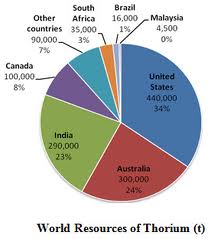 Thorium: "is a natural radioactive chemical element with the symbol Th and atomic number 90. It was discovered in 1828 and named after Thor, the Norse god of thunder. In nature, virtually all thorium is found as thorium-232, and it decays by emitting an alpha particle, and has a half-life of about 14.05 billion years (other, trace-level isotopes of thorium are short-lived intermediates of decay chains). It is estimated to be about four times more abundant than uranium in the Earth's crust and is a by-product of the extraction of rare earths from monazite sands. Thorium was formerly used commonly as the light source in gas mantles and as an alloying material, but these applications have declined due to concerns about its radioactivity." Wiki: Thorium
Thorium: "is a natural radioactive chemical element with the symbol Th and atomic number 90. It was discovered in 1828 and named after Thor, the Norse god of thunder. In nature, virtually all thorium is found as thorium-232, and it decays by emitting an alpha particle, and has a half-life of about 14.05 billion years (other, trace-level isotopes of thorium are short-lived intermediates of decay chains). It is estimated to be about four times more abundant than uranium in the Earth's crust and is a by-product of the extraction of rare earths from monazite sands. Thorium was formerly used commonly as the light source in gas mantles and as an alloying material, but these applications have declined due to concerns about its radioactivity." Wiki: Thorium
Monazite, the most common and commercially most important thorium-bearing mineral, is widely distributed in nature. Monazite is chiefly obtained as a sand, which is separated from other sands by physical or mechanical means.
Why Thorium is better than uranium?
Thorium’s advantages start from the moment it is mined and purified, in that all but a trace of naturally occurring thorium is Th232, the isotope useful in nuclear reactors. This is much better than the 3 to 5% of uranium that comes in the form we need.
Then there’s the safety side of thorium reactions. Unlike U235, thorium is not fissile. That means no matter how many thorium nuclei you pack together, they will not on their own start splitting apart and exploding. If you want to make thorium nuclei split apart, though, it’s easy: you simply start throwing neutrons at them. Then, when you need the reaction to stop, simply turn off the source of neutrons and the whole process shuts down, simple as pie.
Here’s how thorium works: When Th232 absorbs a neutron it becomes Th233, which is unstable and decays into protactinium-233 and then into U233. That’s the same uranium isotope we use in reactors now as a nuclear uranium fuel, the one that is fissile all on its own. Thankfully, it is also relatively long lived, which means at this point in the cycle that the irradiated fuel can be unloaded from the reactor and the U233 separated from the remaining thorium. The uranium is then fed into another reactor all on its own, to generate energy.
The U233does its thing, splitting apart and releasing high-energy neutrons. But there isn’t a pile of U238 sitting by. Remember, with uranium reactors it’s the U238, turned into U239 by absorbing some of those high-flying neutrons, that produces all the highly radioactive waste products. With thorium, the U233 is isolated and the result is far fewer highly radioactive, long-lived byproducts. Thorium nuclear waste only stays radioactive for 500 years, instead of 10,000, and there is 1,000 to 10,000 times less of it to start with.
Differences between thorium and uranium:
Thorium is much different than uranium when used as a nuclear fuel. Thorium is not fissile; meaning it cannot go critical and generate a nuclear chain reaction. This is referred to as thorium's safety valve by Sorensen. Thorium needs a spark or neutron driver to get it to start a reaction and get it to produce heat energy. It must undergo neutron bombardment to produce a by-product or radionuclide that can sustain a nuclear reaction. Thorium bombardment can be controlled. A thorium-fueled reactor must be jump-started with a fissile isotope such as uranium (U235) and/or plutonium (Pu239 or Pu241). Neutron bombardment of thorium results in this reaction: Th232 + Neutron = U233.
Uranium233 is a man-made fissile isotope with a half-life of 160,000 years, and is well-suited for use in nuclear reactors. After Th232 is converted, U233 can be unloaded and then fed to the core of another reactor to be used as fuel in a closed cycle.
Alternatively, U233 can be bred from thorium in an outer blanket [ protective shield ] surrounding a plutonium and/or uranium core, the U233 separated, and then fed back into the core. These are called "breeder reactors" because thorium is the fertile fuel that breeds a fissile radionuclide. Radioactive materials are recycled in thorium, so there is little waste left behind.
There are other significant advantages to the use of thorium in nuclear reactors. The raw material, thorium, is much more abundant than uranium and emits only low-level alpha particles. It has one isotope and therefore, does not require an enrichment cycle [ as uranium needs ] to be used as fuel. It is many times more energy efficient than uranium.
A thorium reactor produces no plutonium that can be made into atomic weapons and less longer-lived radionuclides than a uranium-based reactor. Because there is no chain reaction, there is no chance of a meltdown. Fissile means thorium cannot go "critical" and generate a nuclear chain reaction. But nuclear waste from past operations that contain fissile uranium and plutonium can be used as start-up fuel. Fulp: Thorium as energy fuel
That means thorium could be used to fuel nuclear reactors, just like uranium. Thorium is more abundant in nature than uranium, is not fissile on its own [ which means reactions can be stopped when necessary ], produces waste products that are less radioactive, and generates more energy per ton.
So why on earth are we using uranium? Research into the mechanization of nuclear reactions was initially driven not by the desire to make energy, but by the desire to make bombs. The $2-billion Manhattan Project that produced the atomic bomb sparked a worldwide surge in nuclear research, most of it funded by governments embroiled in the Cold War. And here we come to it: Thorium reactors do not produce plutonium , which is what you need to make a nuke.
Thorium Advantage
Thorium is three times more abundant in nature than uranium. All but a trace of the world’s thorium exists as the useful isotope, which means it does not require enrichment. Thorium-based reactors are safer because the reaction can easily be stopped and because the operation does not have to take place under extreme pressures. Compared to uranium reactors, thorium reactors produce far less waste and the waste that is generated is much less radioactive and much shorter-lived.
To top it all off, thorium would also be the ideal solution for allowing countries like Iran or North Korea to have nuclear power without worrying whether their nuclear programs are a cover for developing weapons… a worry with which we are all too familiar at present. Katusa: thorium not uranium 2012
Fission occurs in thorium when atoms absorb a neutron to become a heavier isotope and quickly decay into an isotope of the element protactinium and then an isotope of uranium, which is fissioned when struck by an additional neutron. The number of neutrons produced is not sufficient for a self-sustained chain reaction.
A particle accelerator could be used to provide the necessary neutrons for fission to occur in thorium and a nuclear reactor making use of such an outside neutron source would be known as an 'accelerator driven system' (ADS).
The notion of the ADS is credited to Carlo Rubbia of the European Organization for Nuclear Research (CERN) joint winner of the 1984 Nobel Prize for Physics. The ADS would likely be far smaller than other reactors and if the accelerator were to be turned off, the nuclear reaction would cease, although it should be noted that even in a reactor which is not critical, the heat from the decay of materials can be significant and cooling is required.
In a thorium reactor, quantities of other fuels could be included, without the fuel being capable of sustaining a chain reaction, and thus the reactor could be used to provide energy from disposing of material such as plutonium from disassembled nuclear weapons. It's also possible to ensure that the reactors are designed in such a way that it is not possible to extract fissile material, which can be used to manufacture nuclear weapons.
Though all nuclear reactors will produce waste products, a reactor fueled by thorium will produce far less long-lived waste products than one fueled by uranium or plutonium, with waste decaying to the same level of radioactivity as coal ashes after 500 years.
Thorium also produces more energy from the same amount of material compared to uranium.
"Two hundred tonnes of uranium can give you the same amount of energy you can get from one tonne of thorium," Rubbia told the BBC News in arecent interview.
Robert Hargraves and Ralph Moir explore the early days of decisions about selecting a nuclear power plant technology --- uranium vs thorium. Enrico Fermi argued that the uranium-plutonium breeder made more weapons faster in the Manhattan Project. Atomic physicist Edward Teller promoted the Thorium Liquid Fluoride Reactor Reduce [ LFTR ].
You can read their excellent article. Hargraves: Thorium reactors 2019 pdf
|
History of Thorium as energy source: The idea of a liquid-fuel nuclear reactor is not new. Enrico Fermi, creator n 1942 of the first nuclear reactor in pile of graphite and uranium blocks at the University of Chicago, started the world’s first liquid-fuel reactor o years later in 1944, using uranium sulfate fuel dissolved in water. Hargraves: Thorium reactors 2019 pdf At the very beginning of nuclear power, thorium and uranium had long been known as potential sources of nuclear fuel to produce electricity. Having two choices of fuel and numerous types of reactors was a difficult choice for scientists in those days. Most of the early research on nuclear power was done in Germany, USSR, France, United Kingdom, Canada and United States. After the war, research continued mainly in United States and USSR. Scientists working on the Manhatten project in 1942 to build an atomic bomb had to choose which reactor possibilities to pursue, which to ignore. A team of scientists led by Robert Oppenheimer built and tested the first nuclear bomb at Los Alamos, New Mexico, USA. After the atomic bomb was made and dropped on Japan, scientists turned to harnessing a nuclear reactor for peaceful electric energy purposes. Two military developments with important implications for power generation were the nuclear submarine and the nuclear-power aircraft carrier. Both of these used the Pressure Water Reactor or PWR, which was to become the most widely used reactor type in civil nuclear power. Chater: history nuclear power The first nuclear reactor to produce a small amount of electricity was the small Experimental Breeder reactor (EBR-1) in Idaho, in the USA, which started up in December 1951. In 1953 President Eisenhower proposed his "Atoms for Peace" program, which reoriented significant research effort toward electricity generation and set the course for civil nuclear energy development in the USA World Nuclear Assoc: history Among the many choices made, perhaps the most important choice for the future trajectory of nuclear power was decided by Admiral Hyman Rickover, the strong-willed Director of Naval Reactors. He decided that the first nuclear submarine, the USS Nautilus, would be powered by solid uranium oxide enriched in uranium-235, using water as coolant and moderator. The Nautilus took to sea successfully in 1955. Building on the momentum of research and spending for the Nautilus reactor, a reactor of similar design was installed at the Shippingport Atomic Power. This relatively small reactor ran on thorium from 1977 until decommissioned in 1982. Fulp: Thorium as energy fuel In 1952, in response to a radical scheme to develop a reactor-powered aircraft, a revolutionary reactor was built using a liquid fuel. This led to the Molten Salt Reactor(MSR), which was designed and built and operated for five years. Capable of burning any nuclear fuel, the MSR forms the fissile energy producing part of the LFTR [ shown in the diagram below in yellow ]. Fissile means it cannot go "critical" and generate a nuclear chain reaction.
From June 1965 until 1969, the boys at Oak Ridge National Laboratory [ORNL] in Tennessee played with an experimental Molten-Salt Reactor Experiment (MSRE), that was designed to operate on the thorium fuel cycle. In place of the familiar fuel rods of modern nuclear plants, the MSRE used liquid fuel—hot fluoride salt containing dissolved fissile material in a solution roughly the viscosity of water at operating temperature. Fissile means it cannot go "critical" and generate a nuclear chain reaction. The MSRE ran successfully for five years, opening a new window on nuclear technology. In what has been called a political move, the US Atomic Energy Commission, during President Nixon's watch, shut down all research on liquid-fluoride reactors in 1976s. The commercial-scale Fort St. Vrain reactor ran on thorium and high-enriched uranium fuel from 1976-1989. Current domestic thorium-based reactor research is being carried out by US-based Lightbridge Corp., formerly Thorium Power. Lightbridge is collaborating with French and Russian private and government interests to develop commercial thorium-fueled reactors. Canada has signed agreements with three Chinese entities to demonstrate and develop the use of thorium fuel in their CanDU [ Canada Deuterium-Uranium ] reactors. Thorium can be used in most advanced nuclear fuel cycle systems including the newest Generation IV reactors. Because of its abundant resources of thorium and domestic lack of uranium, India has been the only country with a sustained effort to use thorium in large scale nuclear power generation. India's 20-year goal is to generate 75% of nuclear power from thorium. Used fuel will be reprocessed to recover fissile material for recycling. |
Reference:
Beissmann Tim, "The thorium-powered car: Eight grams, one million miles," Car Advice, August 16, 2011. Beissmann: thorium driven care 2011
Bowersox Paul, "Irène Joliot-Curie and the Alchemists’ Dream," ANS Nuclear Cafe, September 30, 2011. Bowersox Alchemy
"Radioactive decay of atoms of the naturally-occurring, but slightly unstable element Thorium-232 (90 protons + 142 neutrons) spontaneously emitting an alpha particle (2 protons + 2 neutrons) to transform into an atom of Radium-228 (88 protons + 140 neutrons). No alchemy was required! In fact, it was later discovered that naturally-occurring, long-lived, heavy radioactive elements such as Thorium-232, Uranium-235, and Uranium-238 spontaneously transmute to many other unstable elements, on a pathway ending in stable, non-radioactive isotopes of the element Lead."
Chater James, "A history of nuclear power," Focus on Nuclear Power Generation, 2005. Chater: history nuclear power
Clark Duncan, "Thorium nuclear power," The Manchester Guardian. July 12, 2009. Clark: Thorium nuclear power
Dunlavey Joseph and Christopher Plummer, "Liquid-Flouride Thorium Reactor," Summer.2011. Dunlavey: Thorium Reactor 2011
Edwards Gordon, "URANIUM: Known Facts and Hidden Dangers," address at the World Uranium Hearings Salzburg, Austria, September 14, 1992. "Nuclear power is not a viable answer to our energy problems. We don't even need it for electricity. All you need for conventional electricity generation is to spin a wheel, and there's many ways of doing it: water power, wind power, geothermal power, etc."
Energy from Thorium, "Global New Energy Summit 2012." Global New Energy Summit 2012
Fissile: Unlike natural uranium, natural thorium contains only trace amounts of fissile material (such as 231 Th), which are insufficient to initiate a nuclear chain reaction. Fissile means it cannot go "critical" and generate a nuclear chain reaction. Thorium fuel cycle
Flibe Energy. Flibe Energy Flibe Energy, Inc. flibeenergy@gmail.com 256-277-3542 4951 Century St. Huntsville, Alabama USA 35816
Fulp Mickey, "The Future of Thorium as Nuclear Fuel," Resource Investor, June 29, 2011. Fulp: Thorium as energy fuel
Galbraith Kate, "A New Urgency to the Problem of Storing Nuclear Waste," New York Times, November 27, 2011. Hargraves: Thorium reactors 2019 pdf Hargraves: Aim hi powerpoint
India developing thorium reactor: "Thorium: Green Friendly Nuclear Power." March 06, 2011. India makes thorium energy plant 2011
Department of Atomic Energy India has unveiled the design of two reactors AHWR and AHWR-LEU, both in the mid size (300 MWE) range. Currently India’s Kakrapar-1 reactor is the world’s first reactor which uses thorium rather than depleted uranium. India is also developing a 300 MW thorium-based Advanced Heavy Water Reactor (AHWR), which should be fully operational in 2011.
The AHWR is mainly a thorium-fueled reactor meant for internal use, not for export. It represents a stage 3 reactor i.e. it uses as input the U 233 output produced from Th 232 (stage 2 fast breeders) and should be situated in relative geographic proximity of the Stage 2 Fast Breeders. It has been designed, developed, validated and currently in production with a target of 2012.
The basic design of the AHWR-LEU was revealed domestically in 2008 and to the international community at Vienna in Sept 2009. It runs on a unique 20:80 fuel mix that combines the features of all three stages i.e. low enriched Uranium (stage 1), in-situ conversion of Th to U (it breeds U 233 from Th, a stage 2 process. Howver, because this is a once-through process, some have labeled it a “passive breeder” reactor) and also uses the Th converted U as fuel (stage 3). The AHWR-LEU promises a host of safety, waste management and anti-proliferation features, a design life of 100 years with “plug and play” convenience. This is the reactor meant for export and it is said to be in “development and validation” phase at the BARC with a hard stop of 2020 for achieving complete commercial viability.
LeBlanca David, "Molten salt reactors: A new beginning for an old idea," Elsevier Nuclear Engineering and Design 240 (2010) 1644–1656 LeBlanca: Molten salt reactors 2010
MacPherson Christina, "The eternal cost of dealing with dead, but radioactive, nuclear reactors," Nuclear News, September 15, 2011. MacPherson: decommissioning nuclear reactors 2011
"There are more than 400 nuclear reactors operating in various countries. A nuclear power station has 35-40 years of operating life. After that it must be dismantled and the area must be cleaned up (the decommissioning process). But so far, no nuclear power station has been completely decommissioned in the world. It has been estimated that decommissioning could last about 50 years and it would cost more than the construction cost."
Pentland William, "Is Thorium the Biggest Energy Breakthrough Since Fire? Possibly," Forbes, September 11, 2011. Pentland: Thorium energy breakthru' 2011
Power Plants Around the World Photo Gallery
Rubbia Carlo, "Sub-critical Thorium reactors," CERN, Geneva, Switzerland. Rubbia: Thorium slice_pdf info
Sorensen Kirk, "Thinking Nuclear? Think Thorium," [ Thorium, a Readily Available and Slightly Radioactive Mineral, Could Provide the World with Safer, Clean Energy ] Machine Design, March 16, 2010. Sorensen: thorium machine design
Sorensen Kirk, "Thorium," Ted U-tube, April 22, 2011. Sorensen: thorium Ted Utube
Kirk Sorensen is founder of Flibe Energy and is an advocate for nuclear energy based on thorium and liquid-fluoride fuels. For five years he has authored the blog "Energy from Thorium" and helped grow an online community of thousands who support a renewed effort to develop thorium as an energy source. He is a 1999 graduate of Georgia Tech in aerospace engineering and is also a graduate student in nuclear engineering at the University of Tennessee. He has spoken publicly on thorium at the Manchester International Forum in 2009, at NASA's Green Energy Forum in 2008, and in several TechTalks at Google. He has been featured in Wired magazine, Machine Design magazine, the Economist, the UK Guardian and Telegraph newspapers, and on Russia Today. He also taught nuclear engineering at Tennessee Technological University as a guest lecturer. He is active in nonprofit advocacy organizations such as the Thorium Energy Alliance and the International Thorium Energy Organization. He is married and has four small children.
Thorium Energy Alliance [ John Kutsch director ], "T.E.A. Resources," TEA: thorium info 2012
Thorium engine power plant cost: Thorium engine power plant cost Hargraves: Aim hi powerpoint
Westenhaus Brian, "One Step Closer to a Thorium Fueled Power Plant," New Energy and Fuel, May 3, 2010. Westenhaus: Norway-Sweden activity 2010
Wikipedia, "Molten Salt Reactor." Wiki: MSR
Wikipedia, "Nuclear power in the United States," 2011. Wiki: Nuclear power USA 2011
Wikipedia, Thorium. Wiki: Thorium
World Nuclear Association, "Outline History of Nuclear Energy," June 2010. World Nuclear Assoc: history
Worthington Bryony, "Post-Fukushima world must embrace thorium, not ditch nuclear," The Manchester Guardian Uk, March 09, 2012. Worthington: thorium activity internationally 2012 The man whose inventions led to nuclear power proliferation knew thorium was preferable to uranium – it's time we caught up.
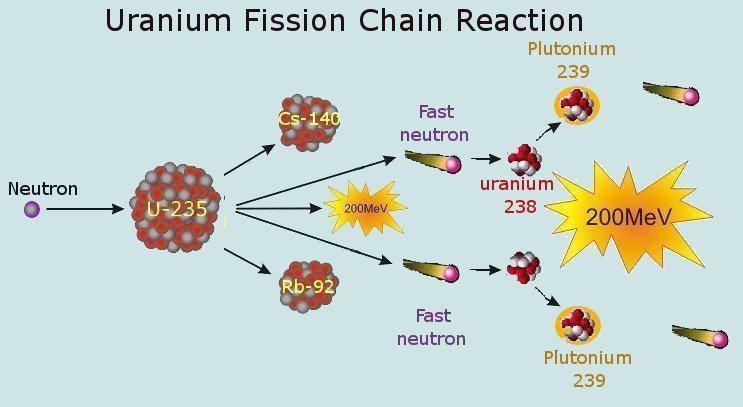
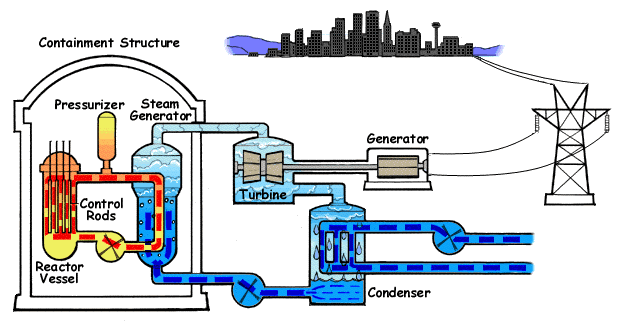
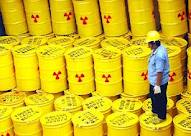 R. Andreas Kraemer, the director of the nonprofit Ecologic Institute in Berlin stated in 2009: “For the time being, however, much radioactive waste remains on the sites of nuclear power plants, which have not been designed for the purpose.”
R. Andreas Kraemer, the director of the nonprofit Ecologic Institute in Berlin stated in 2009: “For the time being, however, much radioactive waste remains on the sites of nuclear power plants, which have not been designed for the purpose.” 